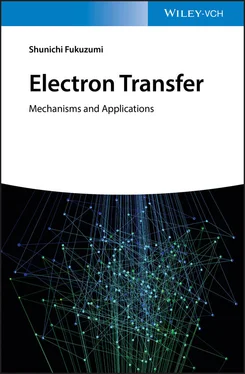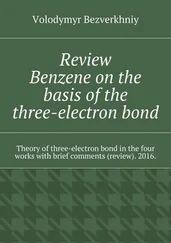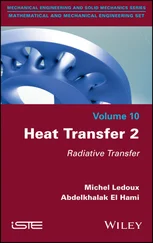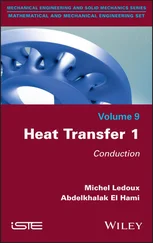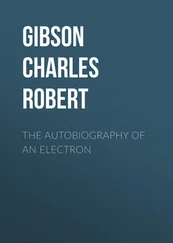Shunichi Fukuzumi - Electron Transfer
Здесь есть возможность читать онлайн «Shunichi Fukuzumi - Electron Transfer» — ознакомительный отрывок электронной книги совершенно бесплатно, а после прочтения отрывка купить полную версию. В некоторых случаях можно слушать аудио, скачать через торрент в формате fb2 и присутствует краткое содержание. Жанр: unrecognised, на английском языке. Описание произведения, (предисловие) а так же отзывы посетителей доступны на портале библиотеки ЛибКат.
- Название:Electron Transfer
- Автор:
- Жанр:
- Год:неизвестен
- ISBN:нет данных
- Рейтинг книги:5 / 5. Голосов: 1
-
Избранное:Добавить в избранное
- Отзывы:
-
Ваша оценка:
- 100
- 1
- 2
- 3
- 4
- 5
Electron Transfer: краткое содержание, описание и аннотация
Предлагаем к чтению аннотацию, описание, краткое содержание или предисловие (зависит от того, что написал сам автор книги «Electron Transfer»). Если вы не нашли необходимую информацию о книге — напишите в комментариях, мы постараемся отыскать её.
Electron Transfer — читать онлайн ознакомительный отрывок
Ниже представлен текст книги, разбитый по страницам. Система сохранения места последней прочитанной страницы, позволяет с удобством читать онлайн бесплатно книгу «Electron Transfer», без необходимости каждый раз заново искать на чём Вы остановились. Поставьте закладку, и сможете в любой момент перейти на страницу, на которой закончили чтение.
Интервал:
Закладка:
10 Chapter 10Figure 10.1 Time profiles of formation of [Fe(C 5H 4Me) 2] +monitored at 650 ...Scheme 10.1 The catalytic cycle for the two‐electron reduction of O 2by Fe(C 5HFigure 10.2 Selected distance (Å) in Co 2(DPB), Co 2(DPA), Co 2(DPX), and Co 2(DPD...Scheme 10.2 The catalytic mechanism of the four‐electron reduction of O 2by fe...Figure 10.3 (a) Time profiles of formation of [Fe(C 5Me 5) 2] +monitored by a...Scheme 10.3 Catalytic dehydration vs. oxygenation of the R group of AcrHR with...Scheme 10.4 Mechanism of the catalytic oxygenation of the R group of AcrHR by ...
11 Chapter 11Scheme 11.1 Catalytic cycle for thermal water oxidation with CAN using [(L)Ru I...Scheme 11.2 Catalytic cycle for photodriven water oxidation by persulfate us...Scheme 11.3 Catalytic cycle for water oxidation by CAN with a Ru III‐aqua compl...Scheme 11.4 Catalytic cycle for photodriven water oxidation by persulfate with...Scheme 11.5 Catalytic cycle for photodriven water oxidation at pH 9.3 by per...
12 Chapter 12Figure 12.1 Structures of Co porphyrin catalysts for two‐electron reduction of...Scheme 12.1 Photocatalytic water oxidation by O 2to produce H 2O 2.Figure 12.2 (a) Time courses of H 2O 2production under visible light irradiatio...Figure 12.3 A schematic drawing of (Fe xCo 1−x) 3[Co(CN) 6] 2where x = 0, 0....Figure 12.4 Schematic representation of a two‐compartment cell employed in t...Figure 12.5 Production of H 2O 2under photoirradiation of a two‐compartment cel...Scheme 12.2 Photocatalytic water oxidation by O 2to H 2O by double photoexcitat...
13 Chapter 13Figure 13.1 Photocatalytic production of H 2O 2from water and O 2using m‐WO 3/FT...Figure 13.2 Time courses of H 2O 2production with m‐WO 3/FTO photoanode and Co IIFigure 13.3 I–V (light grey) and I–P (dark grey) curves of the one...
14 Chapter 14Figure 14.1 Time courses of O 2evolution by X‐Q [0.50 mM; DDQ (black), BQ (sec...Scheme 14.1 Proposed mechanism of the photodriven water oxidation by DDQ with ...
Guide
1 Cover
2 Table of Contents
3 Begin Reading
Pages
1 4
2 vii
3 1
4 2
5 3
6 4
7 5
8 5
9 6
10 7
11 8
12 9
13 10
14 11
15 12
16 13
17 14
18 15
19 16
20 17
21 18
22 19
23 20
24 21
25 22
26 23
27 24
28 25
29 26
30 27
31 28
32 29
33 30
34 31
35 32
36 33
37 34
38 35
39 36
40 37
41 38
42 39
43 40
44 41
45 42
46 43
47 44
48 45
49 46
50 47
51 48
52 49
53 50
54 51
55 52
56 53
57 54
58 55
59 56
60 57
61 58
62 59
63 60
64 61
65 62
66 63
67 64
68 65
69 66
70 67
71 68
72 69
73 69
74 70
75 71
76 72
77 73
78 74
79 75
80 76
81 77
82 78
83 79
84 80
85 81
86 82
87 83
88 84
89 85
90 86
91 87
92 88
93 89
94 90
95 91
96 92
97 93
98 94
99 95
100 96
101 97
102 98
103 99
104 100
105 101
106 102
107 103
108 104
109 105
110 106
111 107
112 108
113 109
114 109
115 110
116 111
117 112
118 113
119 114
120 115
121 116
122 117
123 118
124 119
125 120
126 121
127 122
128 123
129 124
130 125
131 126
132 127
133 128
134 129
135 130
136 131
137 132
138 133
139 134
140 135
141 136
142 137
143 138
144 139
145 140
146 141
147 142
148 143
149 144
150 145
151 146
152 147
153 148
154 149
155 150
156 151
157 152
158 153
159 154
160 155
161 156
162 157
163 158
164 159
165 160
166 161
167 162
168 163
169 164
170 165
171 166
172 167
173 168
174 169
175 170
176 171
177 172
178 173
179 174
180 175
181 176
182 177
183 178
184 179
185 180
186 181
187 181
188 182
189 183
190 184
191 185
192 186
193 187
194 188
195 189
196 190
197 191
198 192
199 193
200 193
201 194
202 195
203 197
204 198
205 199
206 200
207 201
208 202
209 203
210 203
211 204
212 205
213 206
214 207
215 208
216 209
217 210
218 211
219 212
220 213
221 214
222 215
223 216
224 217
225 218
226 219
227 220
228 221
229 222
230 223
231 225
232 226
233 227
234 228
235 229
236 230
237 231
238 232
239 233
Electron Transfer
Mechanisms and Applications
Shunichi Fukuzumi

Copyright
Author
Shunichi Fukuzumi
Department of Material & Life Science
Osaka University
2‐1 Yamada‐oka, Suita
Osaka University
565‐0871 Osaka
Japan
All books published by Wiley‐VCHare carefully produced. Nevertheless, authors, editors, and publisher do not warrant the information contained in these books, including this book, to be free of errors. Readers are advised to keep in mind that statements, data, illustrations, procedural details or other items may inadvertently be inaccurate.
Library of Congress Card No.:
applied for
British Library Cataloguing‐in‐Publication Data
A catalogue record for this book is available from the British Library.
Bibliographic information published by the Deutsche Nationalbibliothek
The Deutsche Nationalbibliothek lists this publication in the Deutsche Nationalbibliografie; detailed bibliographic data are available on the Internet at < http://dnb.d-nb.de>.
© 2020 Wiley‐VCH Verlag GmbH & Co. KGaA, Boschstr. 12, 69469 Weinheim, Germany
All rights reserved (including those of translation into other languages). No part of this book may be reproduced in any form – by photoprinting, microfilm, or any other means – nor transmitted or translated into a machine language without written permission from the publishers. Registered names, trademarks, etc. used in this book, even when not specifically marked as such, are not to be considered unprotected by law.
Print ISBN:978‐3‐527‐32666‐2
ePDF ISBN:978‐3‐527‐65180‐1
ePub ISBN:978‐3‐527‐65179‐5
oBook ISBN:978‐3‐527‐65177‐1
Acknowledgments
The author gratefully acknowledges the contributions of his collaborators mentioned in the references. The author thanks Japan Science Technology Agency and the Ministry of Education, Culture, Sports, Science and Technology of Japan for the continuous support.
1 Introduction
The rapid consumption of fossil fuel has already caused unacceptable environmental problems such as the greenhouse effect by CO 2emission, which is predicted to lead to disastrous climatic consequences [1]. Moreover, the consumption rate of fossil fuels is expected to increase further at least twofold relative to the present by midcentury because of population and economic growth, particularly in the developing countries. It is becoming more and more obvious that fossil fuels will run out eventually in the next century despite the recent shale gas revolution. Thus, renewable and clean energy resources are urgently required in order to solve global energy and environmental issues [2,3]. Among renewable energy resources, solar energy is by far the largest exploitable resource [1–3]. Nature harnesses solar energy for its production by photosynthesis, and fossil fuels are the product of photosynthesis [4]. Fossil fuels range from volatile materials with low carbon:hydrogen ratios such as methane, to liquids such as petroleum, and to nonvolatile materials composed of almost pure carbon, such as anthracite coal. The age of the organisms and their resulting fossil fuels is typically millions of years, and sometimes exceeds 650 million years. The consumption rate of fossil fuels is becoming much faster than the production rate by nature. Thus, it is quite important to develop artificial photosynthetic systems for production of solar fuels, which are hopefully simpler and more efficient than natural systems. The conversion of photon energy to chemical energy in photosynthesis is achieved by electron transfer from the excited state of an electron donor (D *: *denotes the excited state) to an electron acceptor (A) to produce the charge‐separated state (D ·+–A ·−). The high oxidizing power of D ·+in D ·+–A ·−is used for four‐electron oxidation of water to produce dioxygen, whereas the high reducing power of A ·−is used to reduce nicotinamide adenine dinucleotide phosphate (NADP +) coenzyme to NADPH [5]. NADPH reduces CO 2by multi‐electron reduction to produce sugar [4,5]. Thus, electron transfer plays essential roles in photosynthesis. In order to develop artificial photosynthesis systems, it is quite important to control electron‐transfer systems to maximize the energy conversion.
Читать дальшеИнтервал:
Закладка:
Похожие книги на «Electron Transfer»
Представляем Вашему вниманию похожие книги на «Electron Transfer» списком для выбора. Мы отобрали схожую по названию и смыслу литературу в надежде предоставить читателям больше вариантов отыскать новые, интересные, ещё непрочитанные произведения.
Обсуждение, отзывы о книге «Electron Transfer» и просто собственные мнения читателей. Оставьте ваши комментарии, напишите, что Вы думаете о произведении, его смысле или главных героях. Укажите что конкретно понравилось, а что нет, и почему Вы так считаете.
